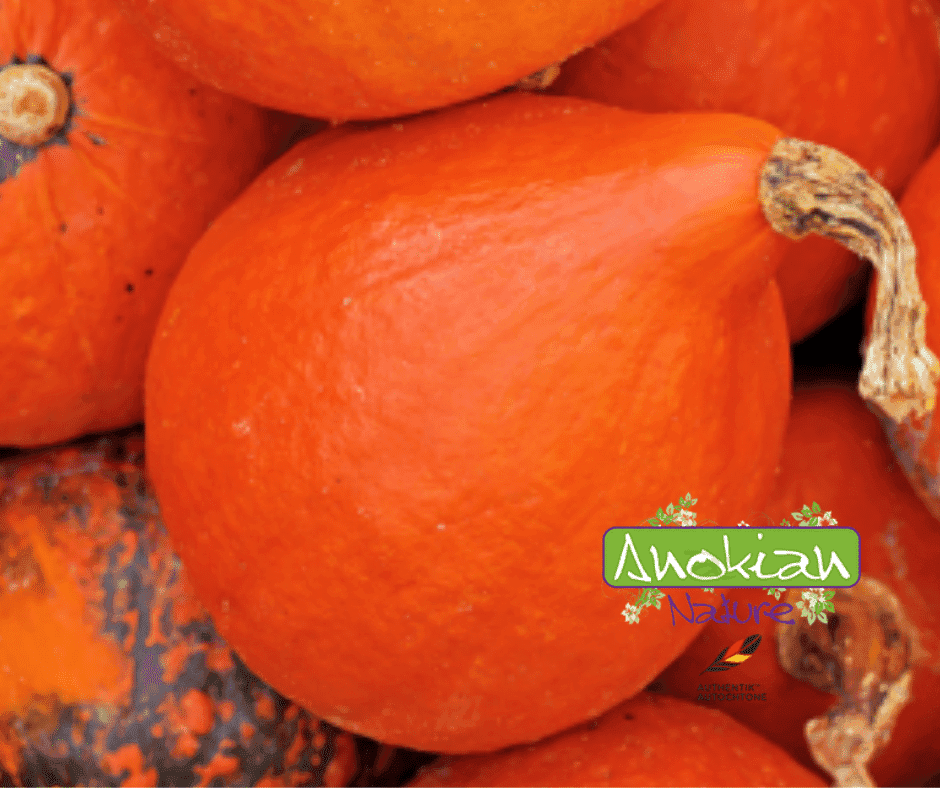The Red Kuri pumpkin is a very versatile vegetable in the kitchen. Its mild, sweet flesh lends itself to a multitude of dishes, both savory and sweet. Here are some ideas for cooking Red Kuri pumpkin in simple and delicious ways.
- 1. Roasted pumpkin
Roasting pumpkin is one of the easiest and tastiest ways to prepare it.
Preparation: Wash the squash thoroughly and cut it in half. Remove the seeds with a spoon.
Cooking: Cut the flesh into chunks or quarters (no need to peel, the skin becomes tender when cooked). Arrange the pieces on a baking sheet, brush them with olive oil, season with salt, pepper, and optionally herbs de Provence, thyme, or rosemary.
Cooking time: Bake in a preheated oven at 200°C (around 180°C for a fan oven) for 30 to 40 minutes, until the flesh is tender and slightly caramelized.
- 2. Pumpkin soup
Pumpkin soup is a classic, comforting and simple to make.
Ingredients :
1 Red Kuri pumpkin
1 onion
2 cloves of garlic
1 potato (optional, to thicken)
Vegetable or chicken broth
Cream (optional)
Salt, pepper, spices (curry, nutmeg, cumin)
Preparation: Peel and cut the pumpkin into pieces. Slice the onion and garlic. Sauté the onion and garlic in a little olive oil or butter, then add the pumpkin and potato (if using).
Cooking: Add the broth and cook for about 20 to 30 minutes, until the pumpkin is tender. Blend the soup until smooth. Adjust the seasoning with salt, pepper, and the spices of your choice.
Creamy Option: Add a little cream or coconut milk for an even creamier soup.
3. Pumpkin puree
A tasty alternative to mashed potatoes.
Preparation: Cut the pumpkin into pieces, without peeling, and steam or boil it until tender.
Cooking: Once cooked, mash with a fork or blend to make a puree. Add butter, cream, salt, pepper, and optionally a little grated nutmeg or grated cheese (e.g., Parmesan) for an even richer flavor.
- 4. Pumpkin gratin
A pumpkin gratin can be a delicious dish to serve as a side dish.
Ingredients :
1 Red Kuri pumpkin
Liquid cream
Grated cheese (Gruyere, Parmesan)
Garlic, salt, pepper, nutmeg
Preparation: Cut the pumpkin into thin slices (you can leave the skin on) and place them in a baking dish. Season with chopped garlic, salt, pepper, and nutmeg. Cover with cream and sprinkle with grated cheese.
Cooking: Bake at 180°C for approximately 30 to 40 minutes, until the gratin is golden brown and the flesh is tender.
- 5. Roasted Pumpkin Salad
For a hot or warm salad, roasted pumpkin can be an excellent ingredient.
Preparation: Roast the pumpkin as directed above. Once roasted, let it cool slightly before cutting it into cubes.
Assembly: Mix it with fresh vegetables like spinach or arugula, nuts (pecans, hazelnuts) or pumpkin seeds, crumbled goat cheese, and a vinaigrette made with olive oil, balsamic vinegar, and honey.
- 6. Pumpkin pie or cake
Pumpkin can also be used in sweet recipes.
Pumpkin Tart: Use shortcrust or shortcrust pastry and spread a pumpkin puree mixed with eggs, sugar, cinnamon, and nutmeg. Bake at 180°C for 35 to 40 minutes.
Pumpkin Cake: Pumpkin can also be incorporated into a cake as a base ingredient for a moist texture. Mix the pumpkin puree with eggs, flour, sugar, baking powder, and spices (cinnamon, ginger). Bake at 180°C for 30 to 40 minutes.
- 7. Pumpkin chips
An original way to cook pumpkin for a snack.
Preparation: Cut the pumpkin into thin slices (with or without skin, according to your preference). Brush the slices with a little olive oil and sprinkle with salt.
Cooking: Bake the slices on a baking sheet at 180°C for 15 to 20 minutes, turning them halfway through, until golden brown and crispy.
Trick
The skin of the Red Kuri pumpkin becomes tender once cooked, so there's no need to peel it before cooking unless you prefer. This helps retain more nutrients and flavor.
Red Kuri Pumpkin can be roasted, cooked in soup, pureed, baked, or used in desserts. Its mild, sweet flavor makes it a delicious ingredient for a variety of comforting dishes.









